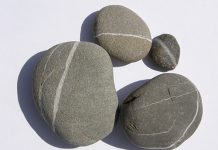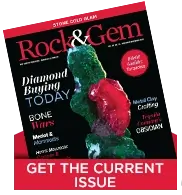
Tanzanite was discovered in 1967 and has captivated the world since with its blue-violet hues and rarity.
Where to Find Tanzanite
Tanzanite is a gem variety of zoisite, (CaCa)(AlAlAl)lAl) O[Si2O7][SiO4](OH), and is unique because of the incorporation of trace amounts of vanadium cations (positively charged ions). It is found exclusively in the Merelani Hills of Tanzania and its discovery elevated Tanzania to a level of prominence in the global gem trade. Tanzanite is one of the few minerals that can be cut into both exceptional gemstones and which also occur as collector-quality specimens. Gemologists estimate the likelihood of finding Tanzanite elsewhere in the world is exceedingly low.

Forming Tanzanite
Tanzanite is found in one unique environment in the tectonically active zone deep near Mount Kilimanjaro. Its formation occurs at ~630°C, deep within the Earth, and the hot fluids of marine or meteoric origin dissolve other rocks to get the vanadium and chromium needed for the deep blue color. Gem tsavorite (a green Cr- and V-bearing variety of grossular) is formed with tanzanite in the same environment.
Mining Practices
Because it is found in only one place in the world, initiatives such as the Tanzanite Foundation aim to promote responsible mining practices, environmental conservation and community development in the region.
Tanzanite Varieties

Photo by Joe Budd.
Tanzanite is trichroic displaying three colors, blue, red and yellowish brown–green when viewed down different crystallographic axes (imaginary lines we draw through the different crystal faces). Heat treatment at approximately 450°C removes the brown-green color giving the tanzanite its famous dichroic (2 colors) character. The red tint seen looking down the c-axis which runs the length of the crystal, is a good indication that the crystal coloration is natural. Many “tanzanite” crystals are discovered as yellowish brown-green zoisite; unheated blue tanzanite is found, but it is relatively rare.
Uses
Tanzanite is prized for jewelry making. Its coloration complements various metal settings allowing for versatility in designs ranging from rings to pendants. Tanzanite’s scarcity and its increasing demand have led to fluctuations in its market value. Its price is influenced by size, color, clarity and overall quality.
Tanzanite is associated with metaphysical properties believed to promote spiritual growth, emotional healing and communication. It is aligned with the throat chakra, enhancing self-expression and clarity. Tanzanite is the birthstone for December and is the gemstone for the 24th wedding anniversary.
This field guide appeared in Rock & Gem magazine. Click here to subscribe. Story by Dr. Stuart Mills and Pam Freeman.













